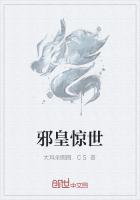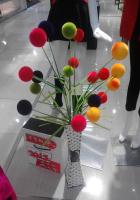"The other day I led you," said Mr. Wilson, "by first considering the phial and tube of colored water, to find out for yourselves the nature and use of a thermometer. We began our simple experiment with colored water, but we know now that mercury is a much better liquid for the purpose"I have here an actual thermometer," he continued. "Let us examine it. It consists of a long glass tube with a hollow bulb or ball at one end. The tube is so very fine that we may call it a capillary tube. The ball and part of the tube are filled with mercury, and both tube and ball are quite sealed and closed.
"Now look at the top of the tube. What do you see?" "There is no mercury there, sir," said Fred. "I supposeit is an empty space or vacuum."
"Yes, Fred, you are quite right. It is a vacuum," said Mr. Wilson.
"We will now place the bulb or reservoir of the instrument in some hot water and watch it. The mercury, you see, expands with the heat, and rises in the tube.
"Suppose I tell you now how this curious and useful instrument is made and filled with mercury. I think it will interest you.
"The first point for us to notice will be the nature of the tube itself. Of course you will readily understand that if the instrument is to measure correctly, the rise and fall of the mercury must be equal in all parts of it. The greatest care has to be used in making the tubes. They must be of uniform bore throughout.
"As each tube is made, it is tested by introducing a small quantity of mercury. The mercury is moved about into different parts of the tube, and if it always measures the same, the tube must be of uniform bore.
"When a suitable tube has been obtained, one end is blown out into a hollow ball, and the tube is then ready to be filled with mercury.
"This filling of the tube, however, is perhaps even a more delicate task than making it. It would be absolutely impossible to pour the mercury in, because of the fineness of the bore.
"The upper end of the glass tube is first made soft and pliable by heating it, and while in that state it is blown out into a long pointed funnel, and a small hole is made in the point. The bulb at the other end is then heated over the spirit-lamp, the result of the heating being to expandthe air in it, and so force some of it out at the hole in thepointed end.
"The point is then immediately plunged into a vessel of mercury. As the tube cools, the air in it contracts, and requires less room. The pressure of the air on the surface of the mercury then forces some of that liquid into the tube.
"The tube is next placed in an inclined position in a charcoal furnace, so as to allow the bulb at its lower end to get hot. The heating, of course, expands the air in bulb and tube, and some of the expanded air escapes by the funnel at the top. It is then set upright to cool.
"The little air left contracts as it cools, and the mercury passes down into the bulb. The same process is repeated again and again till the bulb and part of the tube are filled with mercury.
"The rest is easy. The bulb is heated till the mercury boils, and begins to evaporate. The vapor carries off with it all moisture and air that may still remain in the tube, and the moment the boiling mercury reaches the top, the glass tube is again softened with heat, and then pinched together, so as to securely close it.
"When the tube is closed we have a thermometer, capable of showing changes of temperature, by the rise and fall of the mercury."Lesson 53















